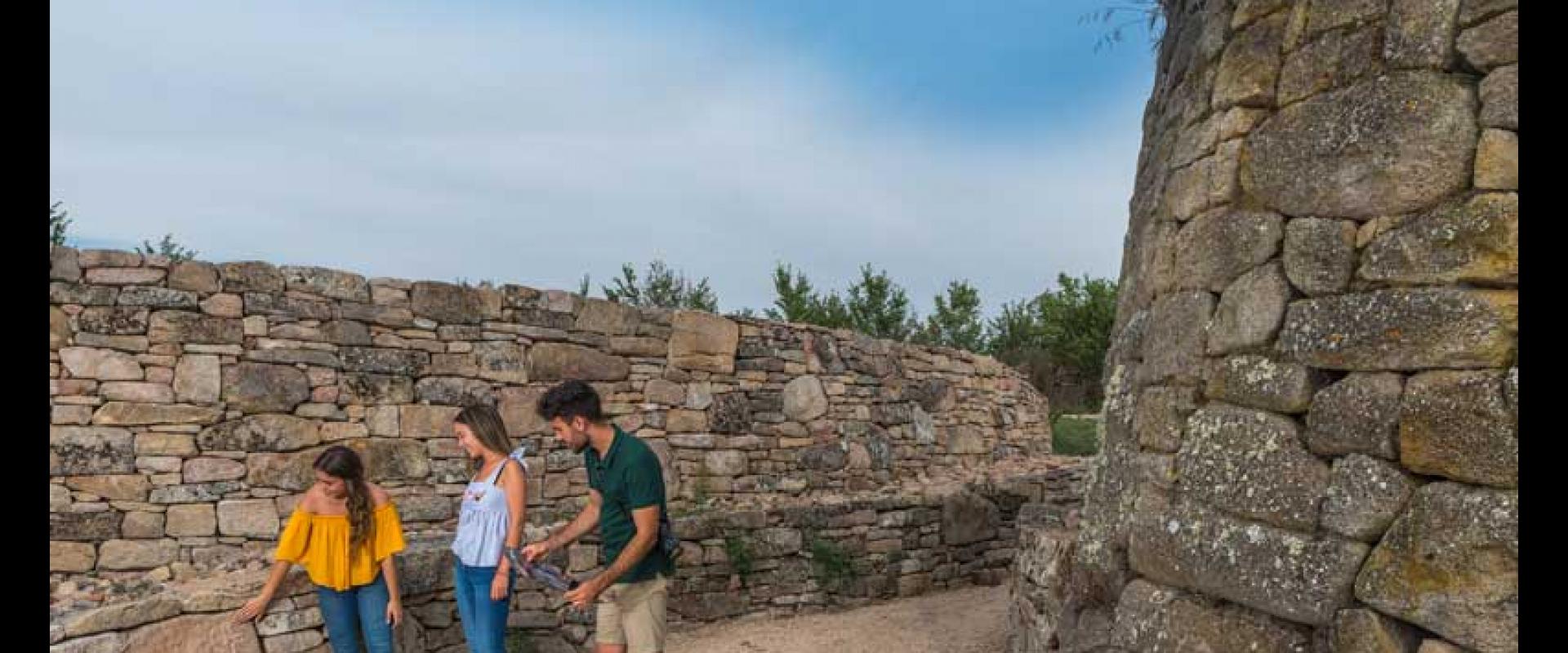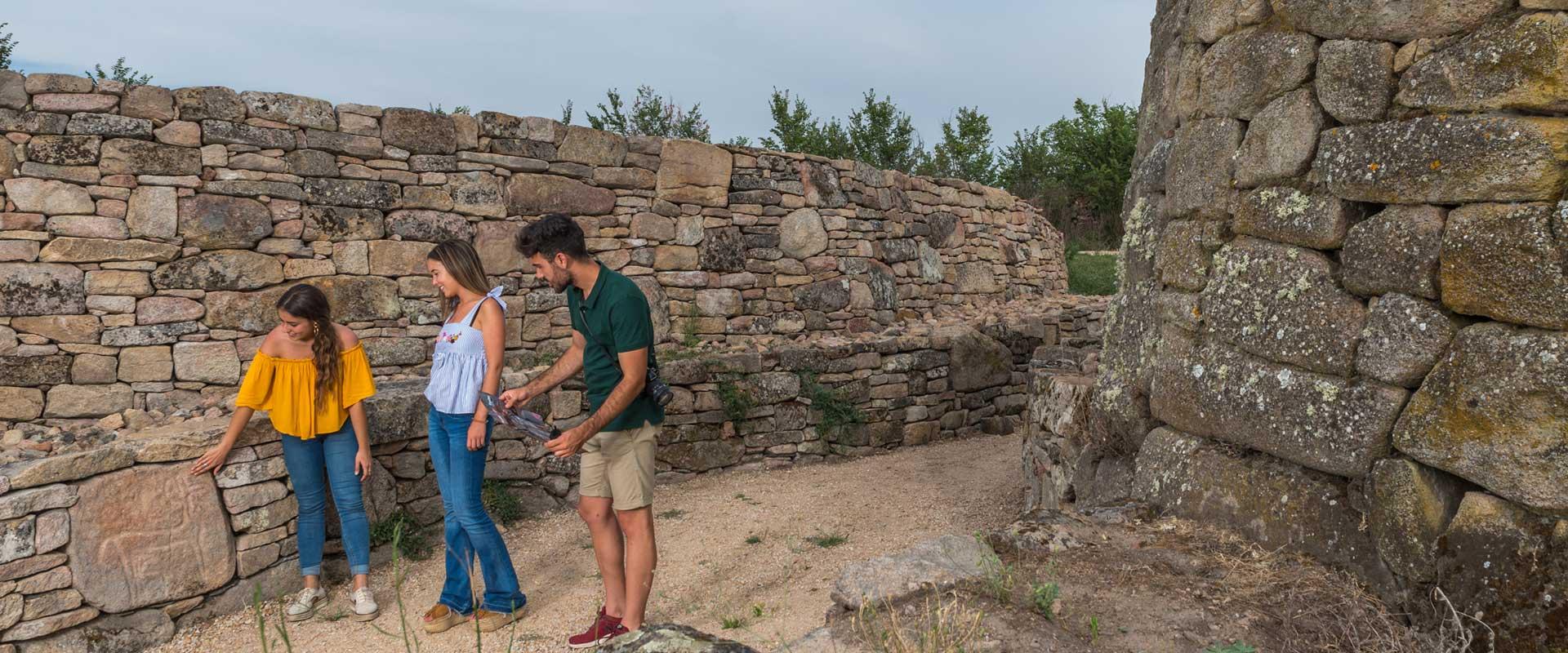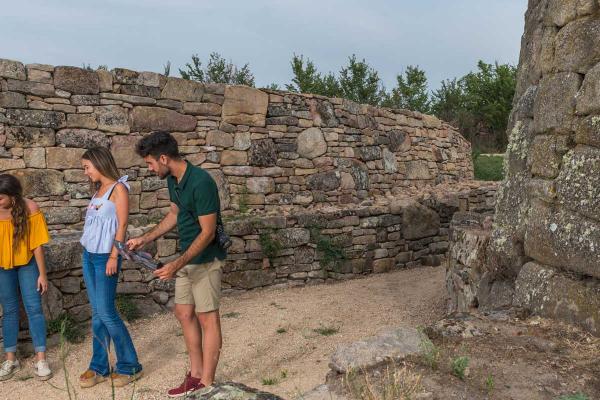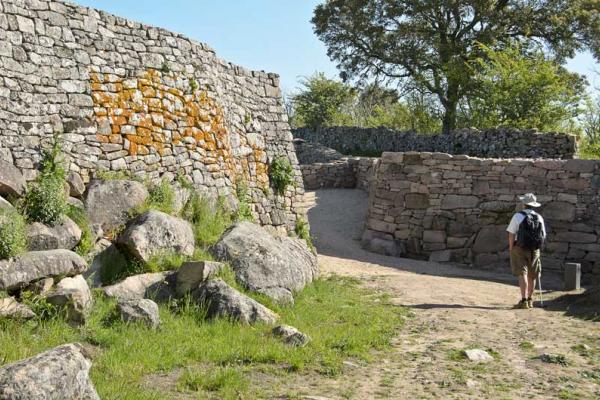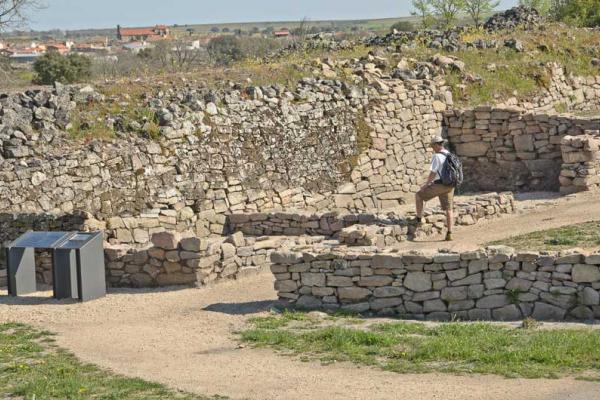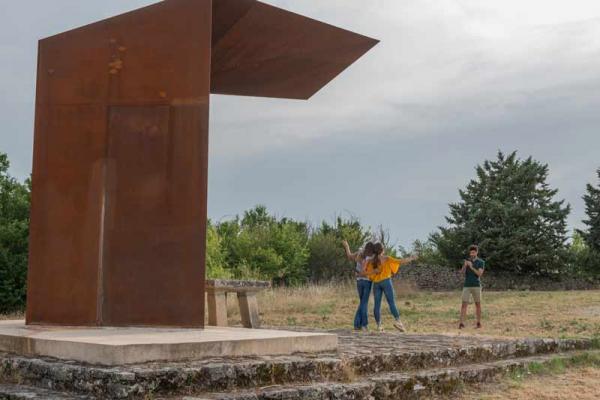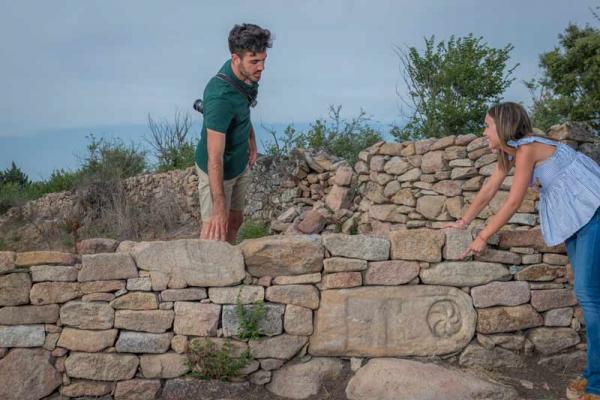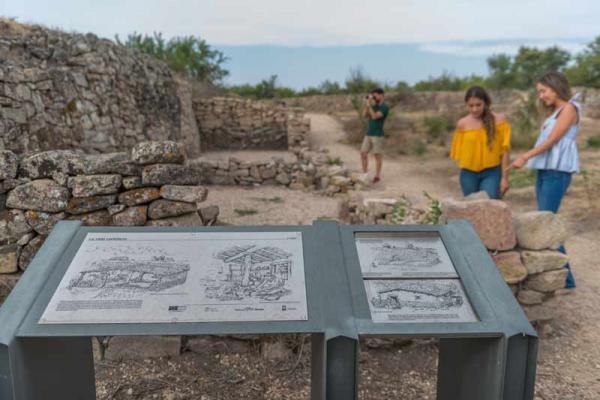Yecla de Yeltes Fortified Settlement
The fortified settlement of Yecla de Yeltes, also known as “The Castle”, is located 2 km far from the village of Yecla, and it is one of the most amazing pre-Roman fortifications in the Iberian Peninsula. It was occupied for a long time and perhaps it was originally called Virlanga. It was built around the V century B.C. BY THE Veton people and was occupied by them and their Hispano-Roman descendants for almost a thousand years. It is believed that the disputes caused, during the repopulation of Ledesma in the XII century, the settlement abandonment and consequently that population went to the new village of Yecla. However, at the time of the Reyes Catolicos (Catholic Queen and King), a hermitage was built inside the site, Nuestra Señora del Castillo Chapel.
The route starts visiting the hermitage of Santiago Apostol, which was built over a late-Roman cemetery. Recent archaeological digging discovered Roman steles which were re-used for the walls, and also some tombs built with stone slabs, which had V or VI century funerary objects inside.
The next stop takes place at the magnificent wall of Yecla which was even 5 meters high and in some places it was 14 meters wide. The defense of the village was very important as well as the prestige of their leaders.
There are other interesting elements in the route: the Roman cemetery where some stone slabs tombs are shown; the Roman door with the animal engravings (among them there is a mare with its baby) and the old village. This site, which was firstly Veton and then Roman, was later on occupied by the Middle Ages people who built some houses annexed to the wall and long walls to keep their farm-animals.
The south door of the Settlement, closed form many centuries, is nowadays open to visitors. You can discover on it the most important engravings of the Settlement, where the horse is the main element. The wall keeps hundreds of these mysterious pictures. An interesting searching starts here.
The route let us discover the location of the Settlement in the confluence of the River Huebra and the stream Varlaña.
Other places of interest are some engravings, the Varlaña mill, the field of stuck stones built by the Veton people to protect themselves from the cavalry attacks and the hermitage of Nuestra Señora del Castillo.
